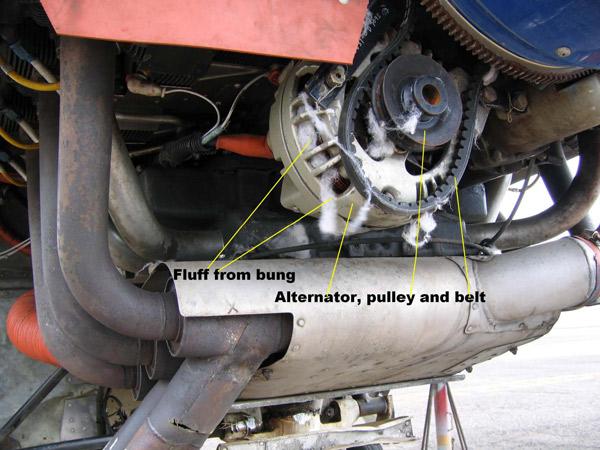On 2 July 2005 at about 0920 Eastern Standard Time, the pilot of a Piper PA-32RT-300 aircraft registered VH-SEQ conducted pre-flight checks for a local scenic flight from Townsville Airport, Qld. The pilot then boarded the five passengers and conducted a safety briefing. The passengers were provided with intercom headsets.
The pilot obtained a clearance from the aerodrome controller (ADC) and commenced the take-off. During the take-off roll the pilot noticed an object go past the windscreen. He rejected the take-off and returned to the apron where he shut down the engine and disembarked the passengers.
The pilot found that the engine cowling bungs1 had not been removed during the pre-flight inspection. He removed pieces of the bung material from the cowl openings. The pilot and passengers again boarded the aircraft and departed for the scenic flight.
While over the city the pilot twice attempted unsuccessfully to contact the ADC by radio for approach instructions. The pilot reported that he then noticed that the ammeter did not indicate a positive battery charge rate. Realising that the electrical system had failed, he contacted the ADC by mobile telephone and obtained approach and landing instructions. A passenger later stated that the headsets had operated intermittently during the flight and stopped functioning prior to the landing.
The pilot selected the aircraft's landing gear down while on the downwind leg of the circuit for runway 07. The gear position lights did not illuminate, and he was unable to confirm that the electro-hydraulic powered landing gear had locked in the down position. The pilot stated that he twice applied the emergency landing gear extension checklist procedure. The landing gear emergency extension checklist required a number of actions to be completed. These included a fish-tailing or yawing manoeuvre to ensure that the main landing gear had locked in the down position.
The pilot then attempted to contact the ADC, but the mobile telephone had failed due to low battery charge. While on final approach the pilot received a green light from the ADC confirming the landing clearance. The pilot stated that he did not advise the passengers of the potential problem with the landing gear.
The pilot reported that he was aware the landing gear could collapse and said he had taken extra care to ease the aircraft gently onto the runway. The right main landing gear collapsed during the landing roll and the aircraft then veered to the right and departed the runway surface. The left main and nose landing gears then collapsed. The pilot and five passengers vacated the aircraft without assistance. There were no reported injuries to either the passengers or the pilot.
The subsequent inspection found that a large part of the leather casing of one engine cowling bung had jammed between the starter ring gear and starter motor and dislodged the alternator drive belt. The pilot reported that the cowling bungs were partially obscured by the 2-bladed propeller and were not fitted with streamers. The colour of the bungs was similar to that of the engine cylinder heads. The passengers reported that the pilot said he had overlooked removing the bungs during the pre-flight inspection as he was distracted at the time.
Due to the damage to the landing gear and the aircraft structure, the investigation was unable to establish detailed reasons for the right main landing gear collapse.
Figure 1: The dislodged alternator belt and fluff from the bungs
ATSB COMMENT
The circumstances of this accident demonstrate the need for thorough pre-flight inspections. Once the pilot became aware that the cowling bungs were damaged, the need for a comprehensive inspection prior to further flight should have been apparent.
The loss of power to the electrical system occurred when the battery discharged after the alternator drive belt was dislodged.
The lack of colour contrast probably contributed to the pilot not seeing the engine cowling bungs during the pre-flight inspection. The common practice of using brightly coloured bung covers with attached streamers would have helped to ensure that the pilot recognised their presence.
Although the pilot assessed that the risk of landing gear collapse was remote, he should have provided a specific emergency briefing to the passengers.
- Used to prevent bird entry to the engine bay when the aircraft is not in use.



